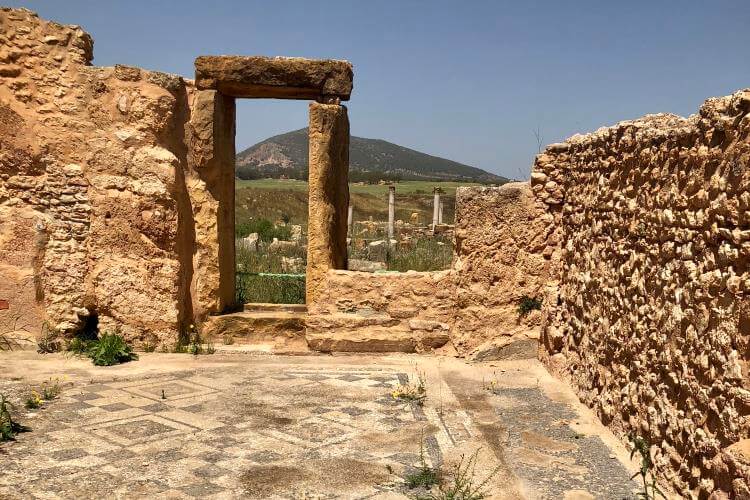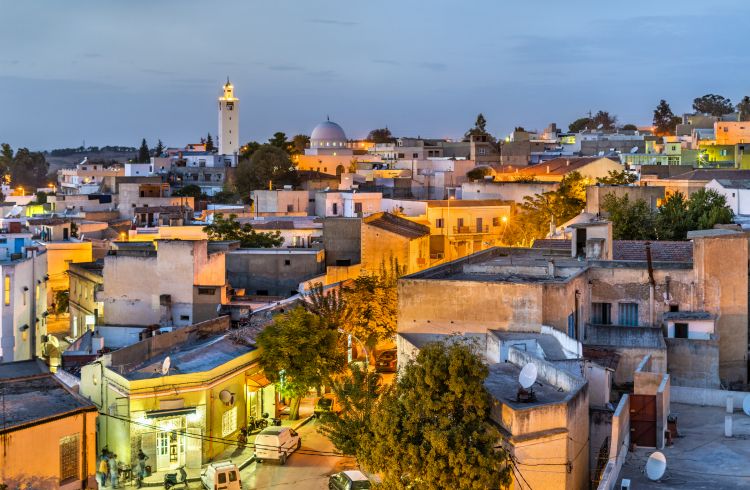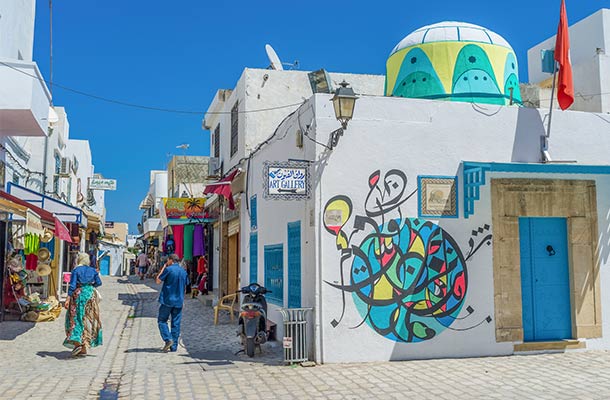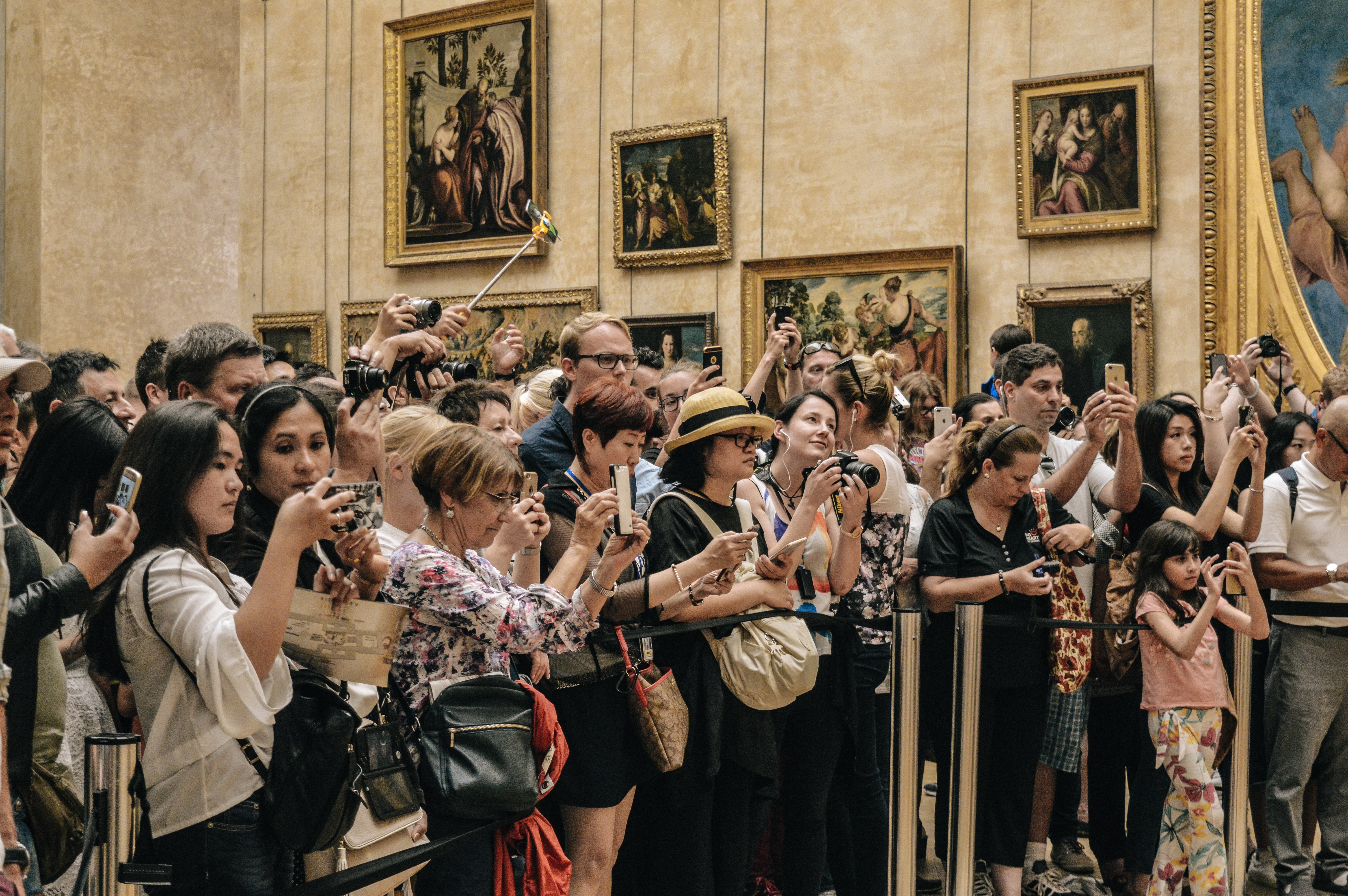A Road Trip Through Tunisia’s Remote Interior
Nomad Lauren explores the ancient cities of Roman Africa, from the gorgeously situated ruins at Dougga to the semi-abandoned Berber village of Takrouna.
 Photo © Getty Images / Rosita So Image
Photo © Getty Images / Rosita So Image
Tunisia’s 700 miles (1125 km) of Mediterranean coastline have long been prime real estate for European sun-seekers. But, I found the country’s true heart is not among the sprawling beach resorts, but hidden away in its central core, a rural, welcoming land that not enough travelers make time to explore.
The April sun warms the car keys in my hand. I’m not fully sure what I’m getting myself into; since the Arab Spring revolution, which started in the central Tunisian town of Sidi Bou Zid in late 2010 and later engulfed most of the region, there was little tourist information to be found. Two terrorist attacks in 2015, and the subsequent travel warnings, which have now been lifted, ensured that North Africa’s smallest country had fallen off travelers’ radar. But I’m determined to see what has been lost from our collective maps.
The historical importance of Tunisia’s remote interior has been clear for millennia. When the ancient Romans arrived, they named this small slice of their empire “Africa” and built extravagant cities on the foundations of Berber and Phoenician settlements to look after the olive groves and grain fields that spread over the surrounding hills.
I find the ruined cities, reused by subsequent civilizations and then abandoned and left to the elements, just as intriguing as their counterparts on the other side of the Mediterranean, but scarcely visited, even though the entry price is a fraction of Italy’s.
The farther I get from Tunis, the more likely it is that the only other souls joining me at the site are a passing shepherd and his flock. On my journey through central Tunisia, I witness a new kind of spring that I am sure would consume the country: this time, Tunisia is blossoming, hopeful and ready to turn over a new leaf and dive into its next chapter.

Dougga
In my head, images of dusty, parched landscapes and flat stretches of nothingness had been firmly planted, but the drive to Dougga, one of Roman Africa’s best-preserved ancient cities, is anything but.
Taking the scenic route through the blink-and-you’ll-miss-it towns of Thibar and Teboursouk leads me through lush fields of purple and yellow wildflowers waving me along in the wind and – much to my surprise – hairpin turns through the increasingly rugged hills surrounding the highway. Dougga is set into one of these hillsides, offering a million-dollar view of the surrounding countryside that the well-to-do Romans must have enjoyed from the nosebleed section of the 3,500-seat theater or the extensive bathhouse, which still has some mosaics in situ.
Thuburbo Majus
Winding through perfectly planted groves of olive trees and through low mountain passes, the lonely highway wanders past ancient monuments scattered in farmers’ fields, apparently too numerous to take the time to signpost.
After a few hours of seeing hardly any vehicles but tractors on the road, I stop at Thuburbo Majus, another ruined Roman city of unimaginable wealth, blessed by the wheat, grape, and olive crops that are still planted here thousands of years later. The war veterans that were the town’s original residents competed with one another to construct ever grander buildings and mosaics, on this day seen only by me, the site’s lonesome caretaker, and the chirping swallows darting out of the overgrown grass as I walk by.

Takrouna
Driving around the hills of Zaghouan, I puzzle over the clifftop rock formations that look like water-etched fortresses of stone, too well-sculpted to be accidental, but too well-camouflaged to be fully man made. The asphalt twists and turns towards the summit, and at the road’s end, the remnants of a semi-abandoned Berber village come into view.
The inhabitants had decamped to the base of the hill years ago, but some enterprising locals are breathing new life into their old home. A welcome cafe has set up shop with panoramic views down to the valley floor and, on clear days, all the way out to the Mediterranean.
After being served a coffee sprinkled with orange blossom, the cafe manager asks if I’d like to take a look at a small museum of Berber artifacts next door. As he gingerly unlocks the door and shows me inside, I know I have discovered the true essence of Tunisia, full of eager locals ready for curious visitors who will venture beyond the beach and find its heart for themselves.

Trip Notes
Most international flights land at Tunis-Carthage International Airport in Tunisia’s capital city, and it’s easiest to pick up a rental car here. Unless you speak French or Arabic, stick with a well-known international rental car company so that if you need assistance, it’s easy to explain the situation in English. You can also explore by train, bus, or louage (the country-wide network of shared minibus taxis).
Staying overnight in a dar, (a traditionally designed house, decked out in North African tiles and textiles, that’s similar to a riad in Morocco), is a highlight of a visit to Tunisia. Almost every town has at least one dar, but as family homes, they are often not distinguishable from the outside.
Tunisia’s archeological sites have poor, if any, signage, so to get the most out of your visit, use a local company, such as Tunisian Journeys, to arrange a driver-guide who will bring the sites to life and make reservations at dars along the way.
Related articles
Simple and flexible travel insurance
You can buy at home or while traveling, and claim online from anywhere in the world. With 150+ adventure activities covered and 24/7 emergency assistance.
Get a quote


1 Comment
I loved this article - this is exactly what I am dreaming of - a round trip in Tunisia including the inlands. Thanks :-)